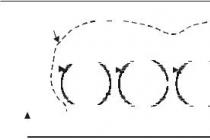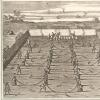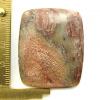Sections: Biology
Acceleration- a process that is fully reflected in the modern generation of teenagers. Our children are smarter, more mature, more independent... But when faced with the realities of life, teenagers often find themselves absolutely helpless. Unfortunately, for various reasons, parents are not always able to provide timely assistance to their children. In such a situation, teachers and school psychologists are obliged to provide qualified help.
It is no secret that most of the so-called “teenage problems” are associated with puberty, or rather, with the unpreparedness of children for this process and its consequences. Based on my own experience working in school, I can say that the degree of illiteracy among teenagers in this area is simply shocking. The lack of a serious theoretical basis and basic practical skills against the backdrop of general sexual promiscuity and permissiveness that reigns in society often leads to intractable problems. Statistics show that every year the number of cases of sexually transmitted and other diseases of the genitourinary system, teenage abortions and young women giving birth is growing every year. And how many distorted destinies are behind these figures!
In light of the above, it can be argued that sex education and education of adolescents is one of the most important and priority areas of work in a modern school. I am sure that the majority of biology teachers and parents will agree with me that it is time to discard puritanical false modesty in questions “about this”; it is also necessary to abandon the policy of unfounded prohibitions, edifications and instructions. Obviously, this is not a panacea. First of all, it is necessary to increase the educational level of adolescents in this area.
There has long been an overdue need to introduce a specialized course in schools “Sex education and education”, within the framework of which both the features of the anatomical structure and physiology of men and women, health and contraception, as well as issues of gender relations, moral and ethical standards of behavior, and a measure of responsibility will be widely considered sexual partners to each other, to the future generation, to society. During the period while the material base is being created and the content of this course is being developed, it is necessary to radically revise the content of the educational material for the 9th grade anatomy course on the topic “Human Reproduction and Development” in the direction of deepening knowledge and expanding the range of issues provided for by the general educational standard. Of course, the number of hours devoted to studying this topic should also increase.
In my methodological developments, I offer approximate lesson planning and outline the content of the option for an in-depth study of the topic “Human Reproduction and Development.”
Lesson notes.
LESSON No. 1. Reproduction. Male genitals.
Reproduction is the process of individuals reproducing their own kind.
All the variety of methods and forms of reproduction can be combined into two groups: asexual and sexual reproduction. In asexual reproduction, the organism develops from one cell or group of cells of the mother's body. This type is characteristic of bacteria, yeast, most plants, as well as single-celled animals, coelenterates and flatworms. Sexual reproduction is characteristic of most animal organisms; it involves two individuals - male and female. The emergence of offspring occurs as a result of the fusion of gametes - a sperm and an egg, each of which carries, respectively, the hereditary characteristics of the father and mother. Fertilization- the process of fusion of male and female reproductive cells - gametes.
Man, like all living organisms, is capable of self-reproduction. The fusion of female and male reproductive cells gives rise to a new organism. The sex of the child is determined at the moment of fertilization. The egg carries only the female principle (X chromosome), so the sex of the child is determined by the sperm that fertilized the egg. Some sperm carry the female principle (X chromosome), and some carry the male principle (Y chromosome). As a result, an indifferent sex gland is formed in the embryo in utero, from which, depending on the resulting set of chromosomes, male or female rudiments develop. An organism with two X chromosomes (XX) is a future girl, an organism with one X chromosome and one Y chromosome (XY) is a future boy. Thus, the sex of the child is determined by the chromosomal makeup of the father's sperm.
In rare cases, a person may develop more or less pronounced signs of both sexes, that is, both ovaries and testicles are formed, and both female and male external genitalia are represented. This phenomenon is called "hermaphroditism". Hermaphroditism– bisexuality, that is, the development in an individual in the embryonic period of characteristics of both male and female.
The reproductive organs are the genital organs, the internal and external structure of which differs significantly between men and women.
Male reproductive system.
1. Internal genital organs.
The male internal genital organs are represented by the sex glands (testes, or testicles), epididymis, vas deferens, seminal vesicles, prostate and Cooper glands.
The testis (testicle) is a paired sex gland. The testes produce and secrete living sex cells - sperm. The testes are covered with a dense connective tissue membrane; inside them there are convoluted seminiferous tubules with a total length of up to 400 meters, in which sperm are formed. For the formation of living sperm, a temperature below body temperature is necessary, so the testes are removed from the body cavity into the scrotum. IN testicular appendages produced sperm accumulate.
The seminal vesicles, prostate gland and Cooper's gland form secretions that create a chemical environment for sperm. The seminal vesicles secrete an alkaline secretion to nourish mature sperm. Prostate gland (prostate) and Cooper's gland produce seminal fluid - sperm, which is the habitat of spermatozoa . In 1 cubic cm of sperm normally contains more than 60 million sperm. The prostate gland also produces a secretion that supports sperm activity. The muscular part of the prostate is the sphincter of the urethra, consistently regulating the flow of urine and sperm, preventing them from mixing.
The internal genital organs also perform an endocrine function. The testes produce the male sex hormone - testosterone, and the prostate - prostaglandins (substances that regulate metabolism in cells). Male sex hormones are called androgens. Androgens mainly determine the secondary sexual characteristics of a man - a deep voice, male-type hair, a powerful skeleton, significant muscle mass, etc.
2. External genitalia.
A man's external genitalia include the scrotum and penis (penis). Scrotum- a leather pouch that encloses the testes and their appendages. The scrotum is a protrusion of the body wall into which the testes descend on the eve of birth or shortly after birth. This organ serves to create the optimal temperature for sperm maturation.
The penis is an organ with a dual physiological function - the removal of urine from the bladder and the release of sperm during ejaculation. The penis consists of cavernous bodies (the cavernous tissue consists of numerous partitions, the spaces between which form “caves”). The cavernous bodies are lined with epithelium and filled with blood. Due to the special structure of the blood vessels, blood during sexual arousal is retained and fills the cavernous bodies of the penis, which leads to its hardening - an erection. Sperm from the testicular ducts enters the urethra and is discharged through an opening located on the head of the penis. Ejaculation is called ejaculation. The skin covering the base of the head forms a loose fold - foreskin, or prepuce. On the inner surface of the preputium there are glands that produce smegmu(lubricant).
LESSON No. 2. Female genitals. Menstruation.
Lecture. Note-taking. Analysis of diagrams and illustrations.
Female reproductive system.
1. Internal genital organs.
A woman's internal reproductive organs include the gonads (ovaries), fallopian tubes, uterus and vagina, and are located in the pelvic cavity.
The ovaries are paired organs that lie in the abdominal cavity. They perform, like the male sex glands, two functions - the formation of germ cells - eggs and the production of female sex hormones - estrogens. In women, the production of sex hormones plays a greater role than in men. Estrogens not only determine secondary sexual characteristics (female-type hair growth, high-pitched voice, development of mammary glands, growth of subcutaneous fat, etc.). Female sex hormones are also responsible for the occurrence of sexual cycles, ensure the normal functioning of the genital organs, the occurrence and proper course of pregnancy, preparation for feeding a newborn, etc.
Ovaries contain oocytes, surrounded by a layer of epithelial cells - follicles. There are about 400-500 of them. The oocyte matures, the follicle bursts, and the mature egg is released into the abdominal cavity. Then it enters the fallopian tube with a flow of liquid. Normally, only one egg matures at a time. Ovulation– the release of a mature egg, it occurs on average once every 28-30 days (menstrual period).
The fallopian tubes are paired organs that carry the egg from the ovary into the uterine cavity. The egg lives in the tube for only one day, while the sperm in the woman’s body cavity remains viable for up to four days. In the tube, the egg is fertilized by a sperm and a zygote is formed. Due to the contraction of the walls of the fallopian tubes and the movement of special cilia that cover the inside of the tubes, the fertilized egg (zygote) enters the uterine cavity. If the zygote is retained in the tube (for example, due to an inflammatory disease or poor patency of the tubes), an ectopic pregnancy occurs.
The uterus is an unpaired hollow muscular organ lined with mucous membrane. It lies in the abdominal cavity between the bladder and rectum. In cross-section, the uterus has the shape of a triangle: the fallopian tubes enter it at the two upper corners, and at the bottom there is the cervix, which opens into the vagina. The function of the uterus is to develop the fetus and push it out during childbirth.
The vagina is a hollow muscular organ, shaped like a tube 7-9 centimeters long, opening into the genital slit. It promotes the movement of sperm into the uterine cavity. In virgins, the genital slit is covered by an outgrowth of the mucous membrane - the hymen, which ruptures during the first sexual intercourse with the release of a small amount of blood and minor pain.
2. External genitalia (vulva).
The external genitalia of a woman are represented by the labia majora and minora, the clitoris and the Bartholin's glands. Labia majora and labia minora protect other external organs. Clitoris formed by cavernous bodies, similar in structure to the male penis, but smaller in size. It contains the opening of the urethra, as well as nerve receptors that promote sexual arousal. Bartholin's glands located in the vestibule of the vagina and secrete a secretion - lubricant.
Menstruation is a natural physiological state of a woman. It begins in girls from puberty at 11-13 years of age. External manifestations of menstruation are bloody discharge from the vagina, sometimes pain in the lower back and lower abdomen.
What is the essence of menstruation? As we have already said, the ovaries are responsible for the maturation of the egg in a woman’s body. They contain oocytes surrounded by a layer of epithelial cells called follicles. There are about 400-500 of them. When the oocyte matures, the follicle bursts and the mature egg is released into the abdominal cavity. Then it enters the fallopian tube with a flow of liquid. Normally, only one egg matures at a time. Ovulation– the release of a mature egg, it occurs on average once every 28-30 days (menstrual period). If a mature egg is fertilized by a sperm, pregnancy will occur and the development of the embryo will begin. If for some reason fertilization does not occur, the egg travels through the fallopian tube into the uterus. The uterus is in a state of readiness to receive the embryo and create all the conditions for its development; its mucous membrane is fully formed. But since fertilization has not occurred, the lining of the uterus and the unclaimed egg are expelled through the vagina along with bloody discharge (menstruation).
Menstruation can last from 3 to 7 days. During this period, the woman feels unwell and becomes irritable. It is very important to maintain personal hygiene at this time to avoid inflammatory diseases of the uterus. Sexual intercourse can only be performed with a condom to avoid infection. At the end of menstruation, the process begins all over again: a new egg matures in the ovary, the mucous membrane grows in the uterus, etc. The entire period lasts 28-30 days and is called menstrual cycle. If this cycle is irregular or accompanied by severe pain during menstruation, you should consult a doctor.
LESSON No. 3. Sexual intercourse. Fertilization.
Lecture. Note-taking. Analysis of diagrams and illustrations.
Intimacy is a very responsible step. You should not start sexual activity too early, when the body has not fully formed and the reproductive system is not ready for it. Being sexually active does not always symbolize adulthood. In addition, intimate relationships are a great responsibility that both partners bear. As a result of sexual intercourse, an unwanted pregnancy may occur, possible infection with sexually transmitted infections, and the occurrence of inflammatory diseases due to failure to comply with basic hygiene. And finally, full sex with the whole gamut of sensations and experiences is not possible without emotional intimacy, mutual understanding between partners and mutual desire.
Before and after sexual intercourse, it is necessary to maintain personal hygiene. To avoid unwanted pregnancy and infections, you should use a condom or other means of protection.
To have sexual intercourse, both partners must experience sexual arousal, so it is usually preceded by various intimate caresses. Sexual arousal is manifested by increased heart rate and breathing, and dilated pupils. In women, the mammary glands swell, the vaginal muscles relax, and lubricant begins to secrete. Men experience an erection. As we have already said, the penis consists of cavernous bodies. They are lined with epithelium and filled with blood. Due to the special structure of the blood vessels, blood during sexual arousal is retained and fills the cavernous bodies of the penis, which leads to its hardening - an erection.
When both partners achieve sexual arousal, sexual intercourse can begin. The penis is inserted into the vagina, the man begins to perform frictions. During sexual intercourse, a woman can experience orgasm several times. A man has an orgasm ejaculation(ejaculation) and, as a rule, happens once. The technique of sexual intercourse and the choice of the most optimal positions are made experimentally.
The first sexual experience is very important. Unfortunately, it is usually not very successful, expectations are often not met, and many things do not work out. First, you need to take seriously the choice of a partner, the place and time of your first experience. The worst option is a dark corner at a crowded party, a state of intoxication, an unfamiliar person as a partner.
Boys must be mentally prepared for the fact that the first attempt at sexual intercourse may not take place due to lack of erection or premature ejaculation. This happens often the first time. The reason for this is nervous overstrain and inexperience, and not any pathology or disease. As a result of nervous overload, a girl’s body can also malfunction in such a situation. The physiological state of arousal does not occur, spasm of the vaginal muscles is possible, which does not allow sexual intercourse. In addition, in girls who have not had sexual experience, in the upper part of the vagina there is an elastic membrane - the hymen. It does not interfere with menstrual flow due to the presence of microscopic pores. But during the first sexual intercourse, it usually breaks. Typically, rupture of the hymen is accompanied by sensitive pain and the release of a small amount of blood. Sometimes this process occurs painlessly and even bloodlessly (the latter is extremely rare).
If contraception (prevention against pregnancy) was not used during sexual intercourse, fertilization and pregnancy may occur. We’ll actually talk about contraceptive methods in another lesson, today I just want to dispel the following myths:
Fertilization does not occur
- if it is the period of menstruation or the beginning of the menstrual period,
- if after sexual intercourse you jump, take a shower, urinate, rinse the vaginal cavity with potassium permanganate,
- if this is the first sexual intercourse in your life,
- if this is not the man’s first ejaculation that night,
- if it's rape
- if they were protected by interrupting sexual intercourse with ejaculation outside the vaginal cavity.
In all these cases and in many others, pregnancy is possible. You should always remember that conceiving a child is a very important step, and an unwanted pregnancy brings a huge number of problems and negative consequences.
So, fertilization is the process of fusion of an egg and a sperm. How does it happen? The mature egg enters the fallopian tube. As a result of ejaculation, sperm enter the vagina and rush through the uterus into the fallopian tubes. Here they encounter the egg, drill through its wall and get inside. The nuclei of the sperm and egg fuse. A zygote is formed. Fertilization occurs in the fallopian tubes.
Normally, only one sperm needs to fertilize an egg. If fertilization occurs with several sperm, a multiple pregnancy occurs and twins are born. They may not be very similar and have different genders. It is extremely rare for two or more eggs to mature at the same time. If they are all fertilized at the same time, multiple pregnancies may also occur. Another pathology occurs even less frequently: one sperm fertilizes one egg, but the development of several embryos begins. Such twins are called identical, they always belong to the same sex and are very similar to each other.
Spermatozoa are quite viable; they can remain alive in a woman’s body cavity for up to four days. Therefore, fertilization can occur either immediately after intercourse or over the next 3-4 days.
Abstract repetition of the studied material.
LESSON No. 4. Pregnancy. Childbirth.
Lecture. Note-taking. Analysis of diagrams and illustrations.
Pregnancy begins from the moment an egg is fertilized by a sperm. Pregnancy is a natural physiological state of a woman associated with the development of the fetus. A woman's pregnancy lasts an average of 280 days (9 months) and ends with childbirth.
From the moment of fertilization, the ovaries begin to actively produce the so-called "pregnancy hormones" They block the production of eggs throughout pregnancy to prevent reconception. Cases of repeated conception are known to science, but are extremely rare and lead either to spontaneous miscarriage or to serious disturbances in the embryonic development of the child. “Pregnancy hormones” also suspend the process of menstruation, which stops during this period, and activate processes associated with preparing the uterus to receive the embryo (building up the mucous membrane, increasing blood circulation in the walls of the uterus, etc.). If there is a hormonal imbalance or inflammatory diseases of the uterus and ovaries, sometimes in the first months of pregnancy menstrual-like reactions, the so-called “menstrual ablution of the fetus,” can be observed. Such phenomena are pathological and increase the risk of miscarriage and even fetal death. "Pregnancy hormones" cause a series of gradual changes in a woman's body. The mammary glands enlarge, the nipple circles enlarge and darken, the composition of the blood changes, and blood pressure rises. The size and weight of the uterus increases. Thus, “pregnancy hormones” block the production of eggs, stop the process of menstruation and cause a number of changes in a woman’s body. That is why the first sign of pregnancy is the cessation of menstruation, and all tests for early diagnosis of pregnancy (by urine and blood) are based on identifying the level of these hormones in the body.
Subsequently, a pregnant woman's metabolism changes significantly. The need for water, minerals and vitamins increases as the growing body needs them. Providing the fetus with the necessary nutrients is a serious burden on the mother's body and can greatly undermine her health. During pregnancy, dental diseases become more active, bones become more fragile, and the condition of hair and nails worsens. That is why it is necessary to be regularly examined by a dentist and avoid perm and hair coloring.
A pregnant woman should eat well, but not excessively. The diet must include fruits and vegetables, as well as meat and dairy products, especially cottage cheese. During pregnancy, a woman should not gain more than 10 kg. Weight gain begins around the 16th week of pregnancy, before which many women even lose weight. Excess weight increases the load on the heart and blood vessels, makes breathing difficult, and complicates childbirth. As the fetus develops, the abdomen begins to grow and the center of gravity shifts, which causes a slight curvature of the spine. Frequent accompaniments of pregnancy are varicose veins in the legs (as a result of heavy weight), impaired elasticity of the skin in the abdomen, buttocks, and breasts (stretch marks). Sometimes toxicosis occurs, accompanied by nausea, vomiting, diarrhea, loss of appetite and weight. With constant monitoring by a doctor and following all his recommendations, doing therapeutic exercises for pregnant women, massage, proper nutrition and regimen, most of the listed problems can be avoided.
Of course, smoking and drinking alcoholic beverages are absolutely contraindicated for a pregnant woman. This is due to the fact that the mother’s body does not have a barrier that prevents nicotine and alcohol from entering the baby’s body. These substances cause disturbances in the development of the fetus, slow down its growth, and can cause serious pathologies. Taking drugs during pregnancy is even more dangerous.
Pregnancy puts a serious strain on the nervous system. In the first half of pregnancy, most women become irritable, touchy, and whiny. Sleep is often disturbed, a feeling of malaise appears, and fatigue quickly increases. A woman’s bad mood and well-being affects the state of the fetal nervous system and its development. Therefore, others need to show more care and patience towards the expectant mother. The daily routine is very important. A pregnant woman should not overwork or do hard work. Daily walks in the fresh air are required. In the second half of pregnancy, an afternoon nap is recommended. It is extremely important to maintain hygiene of body and clothing.
The expectant mother receives more detailed instructions from her doctor. It should also be noted that in case of any disturbance in the normal course of pregnancy (vomiting, pain in the lower abdomen, spotting, dizziness, etc.), you should immediately consult a doctor.
Pregnancy is a serious test for a woman’s body, so only a mature, mature body can cope with it. The optimal childbearing age is considered to be from 21 to 30 years. Pregnancy during adolescence entails a lot of problems. The body of a teenage mother is not yet ready for such stress; as a result, metabolism and hormonal levels are seriously disrupted, and a number of diseases of the endocrine, musculoskeletal and reproductive systems develop. This, of course, affects the health of the unborn child. Young mothers often give birth to weakened, premature children with serious pathologies, and miscarriages are common. An adult, healthy woman usually tolerates pregnancy well. An important incentive in this case is the feeling of motherhood, the expectation of a desired child.
Stages of embryonic development.
The development of a child in the womb goes through several stages.
- Development of the embryo
The process of fertilization of the egg occurs in the fallopian tube. From this moment the development of the embryo begins. The fertilized egg moves towards the uterus. Along the way she actively shares. By the time it enters the uterus, the embryo consists of 32 cells. Here the embryo implants into the mucous membrane of the uterine wall, quickly divides and grows. From the membranes that surround the embryo and the blood vessels of the uterus, a special organ is formed - the placenta. Through the placenta, the embryo receives oxygen and nutrients from the mother and releases carbon dioxide and metabolic products. The placenta serves as a filter that filters out some of the harmful substances, medications, and pathogens.
After a few weeks, the embryo separates from the placenta and is connected to it through the umbilical cord, where blood vessels pass. The blood of mother and child never mixes; it is separated by a special membrane that allows gases and metabolic products to pass through. By the end of the 4th week of pregnancy, the body length of the embryo reaches 3 mm. The rudiments of limbs and ears appear, and a little later the rudiments of eyes and nose are formed. Organ systems are gradually formed. The heart begins to pulsate, the limbs stretch. Body length reaches 15 mm. At the 6th week of pregnancy, the nervous system is formed. The embryo reacts to sounds and is able to feel pain.
- Fetal development
By the end of the 8th week, the structure of the body is formed: the chest, head, eyes, ears, nose, and limbs are distinguished. The genitals are visible. The body length reaches 2.5 cm. The volume of amniotic fluid increases. The complexity and improvement of organ systems continues. From this moment on, the embryo is called a fetus. In the future, its growth and development continues.
After the gestation period ends, the fetus matures. Childbirth begins. Childbirth- this is the process of pushing out the fetus due to contraction of the walls of the uterus and the muscles of the abdominal wall, which is regulated humorally. Childbirth normally lasts from 1 to 12 hours. Labor pains are very painful, but modern medicine makes this process painless. By the beginning of labor, the fetus turns upside down, so it will be easier for it to pass through the birth canal. The cervix dilates and a mucous plug emerges, which protects the uterus from foreign substances. During contractions, the amniotic sac bursts and amniotic fluid flows out. The fetus moves through the vagina and comes out. Next comes the placenta, also rejected by the body.
The umbilical cord connecting the fetus to the placenta is cut and clamped. Excess carbon dioxide immediately accumulates in the child’s body, which excites the respiratory center. The child takes his first breath, his lungs expand. This is how the life of a new person begins. Childbirth is a complex process, so the presence of doctors is necessary in order to alleviate the suffering of the mother and reduce trauma to the mother and child.
Abstract repetition of the studied material.
LESSON No. 5. Postembryonic human development.
Lecture. Note-taking. Analysis of diagrams and illustrations.
Human development after birth is called postembryonic development. Several periods can be distinguished in it.
- Infancy.
- Early childhood.
- Preschool period.
- School period.
Infancy is the first year of life. The first month of life is considered the neonatal period. At this time, the baby sleeps from feeding to feeding. Caring for it requires attention and care, sterile cleanliness and strict regime. Breastfeeding is considered the best, since only with mother's milk does the child receive antibodies, thanks to which his immunity is formed. In addition, natural milk is better absorbed. From the second month of life, children begin to be fed easily digestible and healthy food.
During the first year of life, dramatic changes occur in the child's body. The profile of the musculoskeletal system is seriously changing. The child learns to coordinate movements, roll over, hold his head up, sit up, crawl, walk, run. The complexity and improvement of all internal organs continues. The child’s psyche develops no less intensively during this period. He learns to recognize people and objects, learns what is pleasant and what is dangerous. Begins to recognize tastes, smells, colors. Then the first behavioral patterns are formed. The child learns to smile, laugh, rejoice and, finally, the ability to comprehend actions arises and speech is formed. A strict regime, good nutrition, care and attention from others are important for the child’s physical and mental health.
Early childhood includes the period from 1 to 3 years. At this time, the child is actively growing and developing both physically and mentally. He already knows how to do a lot on his own, coordinates his movements well, and demonstrates complex behavior. The child strives for self-affirmation; the favorite word for children at this age is “Sam!”. The child develops new motor skills, he freely manipulates objects, draws, experiences a craving for cognitive activity and needs physical activity. During this period, it is important not to limit the child’s desire for independence, active games, and to satisfy his curiosity.
In the period from 3 to 6 years, children’s cognitive activity, memory, and thinking become more active. At this time, the favorite word is: “Why?” The development of the brain continues, internal speech is formed, a sign of which is the child’s conversation “with himself.” Preschoolers have a rich imagination and a wide range of emotions. The main activity becomes play. Through it, children learn new things, build their own behavior patterns, and learn to live as adults.
At the age of 6 to 17 years, a radical restructuring of all life support systems of the body occurs. In elementary school, the child masters new skills and abilities, forms conditioned reflexes (writing, reading, etc.). A difficult period is the transition from play as the main form of activity to study. In elementary school, the physical and mental development of the child continues.
From 11-13 years of age, a new period begins in life - adolescence. This is probably the most difficult time. The last stage begins, completing the formation of the organism. In teenage girls, the muscular system develops, the subcutaneous fat layer gradually increases, a thoracic type of breathing is formed, the mammary glands enlarge, menstruation begins, armpit and pubic hair appears, and a female figure is formed. This period is also characterized by active bone growth. Teenage boys develop a male-type figure: active bone growth, muscle growth, hair growth in the armpits, pubis, arms, legs, and face. At the same time, the voice breaks and abdominal breathing is formed. Hormonal changes can manifest themselves in the form of involuntary erections and wet dreams. Pollutions- This is involuntary ejaculation during sleep. As a rule, their cause is overexcitation of the nervous system. For example, watching a football match before bed.
Another unpleasant feature of this period is acne, which is caused by the activation of processes occurring in the skin and an increase in physical activity, causing increased sweating. Activation of metabolism in the body of boys and girls during adolescence leads to increased physical activity. During this period, irritability and unmotivated aggressiveness, dissatisfaction with oneself and the world around them appear. Children become adults.
Abstract repetition of the studied material.
LESSON No. 6. Puberty. Watching the educational video "Sex Education".
LESSON No. 7. Diseases of the reproductive system. Contraception.
Lecture. Note-taking. Analysis of diagrams and illustrations.
In previous lessons, we already talked about the fact that it is always necessary to take a responsible approach to choosing a partner and, if possible, eliminate promiscuous relationships. In addition, even when communicating with a regular partner, it is necessary to maintain hygiene and take measures to protect against unwanted pregnancy and sexually transmitted infections. Before we move on to contraception, let's look at the main groups of sexually transmitted diseases.
- Infectious diseases of the reproductive system.
- sexually transmitted infections: gonorrhea, trichomoniasis, chlamydia, etc.
Transmitted sexually, causing diseases of the genital organs. Usually manifested by redness of the genital organs, itching, irritation, the appearance of atypical discharge, and painful sensations. They are treated with medication only by a medical specialist.
- inflammatory and fungal diseases of the genital organs
As a rule, they are the result of poor hygiene, as well as aggressive sex, accompanied by microtrauma to the surface of the genital organs. Hypothermia may also be a cause. Transmitted sexually. They manifest themselves similarly to sexually transmitted infections, but can be asymptomatic, subsequently causing serious diseases of the internal genital organs, including impotence and infertility. They are treated with medication only by a medical specialist.
- Diseases that are sexually transmitted, but also affect other organ systems: AIDS, syphilis, herpes, hepatitis.
Transmitted sexually and through blood, they affect not only the reproductive system, but also other organs. Difficult to treat. AIDS is incurable. Diagnosed and treated only by a medical specialist.
Listening to reports on the topic "Diseases of the reproductive system."
Lecture. Note-taking.
To avoid negative consequences, it is necessary to use contraception. Some of them only protect against unwanted pregnancy, others also protect against infectious diseases. There are several groups of these means and methods, all of them have positive and negative sides.
Methods of contraception:
- Behavioral methods.
- Mechanical methods.
- Surgical methods.
- Calendar methods. Hormonal methods.
- Chemical methods.
Abstract repetition of the studied material.
LESSON No. 8. Generalization. Control and correction of knowledge.
a physiological function necessary for the preservation of humans as a biological species. The process of reproduction in humans begins with conception (fertilization), i.e. from the moment of penetration of the male reproductive cell (sperm) into the female reproductive cell (egg, or ovum). The fusion of the nuclei of these two cells is the beginning of the formation of a new individual. A human embryo develops in a woman's uterus during pregnancy, which lasts 265-270 days. At the end of this period, the uterus begins to spontaneously contract rhythmically, contractions become stronger and more frequent; the amniotic sac (fetal sac) ruptures and, finally, the mature fetus is “expelled” through the vagina - a child is born. Soon the placenta (afterbirth) also leaves. The entire process, starting with uterine contractions and ending with the expulsion of the fetus and placenta, is called childbirth.
see also
PREGNANCY AND CHILDREN;
HUMAN EMBRYOLOGY. In more than 98% of cases, during conception, only one egg is fertilized, which causes the development of one fetus. Twins (twins) develop in 1.5% of cases. About one in 7,500 pregnancies result in triplets.
see also MULTIPLE BIRTH. Only biologically mature individuals have the ability to reproduce. During puberty (puberty), a physiological restructuring of the body occurs, manifested in physical and chemical changes that mark the onset of biological maturity. During this period, the girl’s fat deposits around the pelvis and hips increase, the mammary glands grow and become round, and hair growth develops on the external genitalia and armpits. Soon after the appearance of these so-called secondary sexual characteristics, the menstrual cycle is established. Boys' physique changes noticeably during puberty; the amount of fat on the stomach and hips decreases, the shoulders become wider, the timbre of the voice decreases, and hair appears on the body and face. Spermatogenesis (production of sperm) in boys begins somewhat later than menstruation in girls.
REPRODUCTIVE SYSTEM OF WOMEN
Reproductive organs. The female internal reproductive organs include the ovaries, fallopian tubes, uterus, and vagina.
FEMALE REPRODUCTIVE ORGANS IN SECTION (side view): ovaries, fallopian tubes, uterus and vagina. All of them are held in place by ligaments and are located in the cavity formed by the pelvic bones. The ovaries have two functions: they produce eggs and secrete female sex hormones that regulate the menstrual cycle and maintain female sexual characteristics. The function of the fallopian tubes is to carry the egg from the ovary to the uterus; in addition, this is where fertilization occurs. The muscular hollow organ of the uterus serves as a “cradle” in which the fetus develops. The fertilized egg is implanted into the wall of the uterus, which stretches as the fetus grows and develops. The lower part of the uterus is its cervix. It protrudes into the vagina, which at its end (vestibule) opens outwards, providing communication between the female genital organs and the external environment. Pregnancy ends with spontaneous rhythmic contractions of the uterus and expulsion of the fetus through the vagina.

The ovaries - two glandular organs weighing 2-3.5 g each - are located behind the uterus on both sides. In a newborn girl, each ovary contains an estimated 700,000 immature eggs. All of them are enclosed in small round transparent sacs - follicles. The latter ripen one by one, increasing in size. The mature follicle, also called the Graafian vesicle, ruptures, releasing the egg. This process is called ovulation. The egg then enters the fallopian tube. Typically, during the entire reproductive period of life, approximately 400 eggs capable of fertilization are released from the ovaries. Ovulation occurs monthly (around the middle of the menstrual cycle). The burst follicle sinks into the thickness of the ovary, is overgrown with scar connective tissue and turns into a temporary endocrine gland - the so-called. corpus luteum, which produces the hormone progesterone. The fallopian tubes, like the ovaries, are paired formations. Each of them extends from the ovary and connects to the uterus (from two different sides). The length of the pipes is approximately 8 cm; they bend slightly. The lumen of the tubes passes into the uterine cavity. The walls of the tubes contain inner and outer layers of smooth muscle fibers, which constantly contract rhythmically, which ensures the wave-like movements of the tubes. The inside walls of the tubes are lined with a thin membrane containing ciliated (ciliated) cells. Once the egg enters the tube, these cells, along with muscle contractions of the walls, ensure its movement into the uterine cavity. The uterus is a hollow muscular organ located in the pelvic abdominal cavity. Its dimensions are approximately 8-5-2.5 cm. Pipes enter into it from above, and from below its cavity communicates with the vagina. The main part of the uterus is called the body. The non-pregnant uterus has only a slit-like cavity. The lower part of the uterus, the cervix, is about 2.5 cm long, protruding into the vagina, into which a cavity called the cervical canal opens. When a fertilized egg enters the uterus, it is immersed in its wall, where it develops throughout pregnancy. The vagina is a hollow cylindrical formation 7-9 cm long. It is connected to the cervix along its circumference and extends to the external genitalia. Its main functions are the outflow of menstrual blood, the reception of the male genital organ and male seed during copulation, and the provision of passage for the newborn fetus. In virgins, the external opening to the vagina is partially covered by a crescent-shaped fold of tissue, the hymen. This fold usually leaves enough space for the flow of menstrual blood; After the first copulation, the vaginal opening widens.
Mammary gland. Full-fledged (mature) milk in women usually appears approximately 4-5 days after birth. When a baby suckles at the breast, there is an additional powerful reflex stimulus to the glands producing milk (lactation).
see also BREAST. The menstrual cycle is established soon after the onset of puberty under the influence of hormones produced by the endocrine glands. In the early stages of puberty, pituitary hormones initiate the activity of the ovaries, triggering a complex of processes that occur in the female body from puberty to menopause, i.e. for approximately 35 years. The pituitary gland cyclically secretes three hormones that are involved in the process of reproduction. The first - follicle-stimulating hormone - determines the development and maturation of the follicle; the second - luteinizing hormone - stimulates the synthesis of sex hormones in the follicles and initiates ovulation; the third - prolactin - prepares the mammary glands for lactation. Under the influence of the first two hormones, the follicle grows, its cells divide, and a large fluid-filled cavity is formed in it, in which the oocyte is located (see also EMBRYOLOGY). The growth and activity of follicular cells is accompanied by the secretion of estrogens, or female sex hormones. These hormones can be found both in follicular fluid and in the blood. The term estrogen comes from the Greek oistros ("fury") and is used to refer to a group of compounds that can cause estrus ("estrus" in animals). Estrogens are present not only in the human body, but also in other mammals. Luteinizing hormone stimulates the follicle to rupture and release the egg. After this, the follicle cells undergo significant changes, and a new structure develops from them - the corpus luteum. Under the influence of luteinizing hormone, it, in turn, produces the hormone progesterone. Progesterone inhibits the secretory activity of the pituitary gland and changes the state of the mucous membrane (endometrium) of the uterus, preparing it to receive a fertilized egg, which must penetrate (implantate) into the wall of the uterus for subsequent development. As a result, the wall of the uterus thickens significantly, its mucous membrane, containing a lot of glycogen and rich in blood vessels, creates favorable conditions for the development of the embryo. The coordinated action of estrogen and progesterone ensures the formation of the environment necessary for the survival of the embryo and the maintenance of pregnancy. The pituitary gland stimulates ovarian activity approximately every four weeks (ovulatory cycle). If fertilization does not occur, most of the mucous membrane, along with the blood, is rejected and enters the vagina through the cervix. Such cyclically repeating bleeding is called menstruation. For most women, bleeding occurs approximately every 27-30 days and lasts 3-5 days. The entire cycle that ends with the shedding of the uterine lining is called the menstrual cycle. It is regularly repeated throughout the reproductive period of a woman’s life. The first periods after puberty may be irregular, and in many cases they are not preceded by ovulation. Menstrual cycles without ovulation, often found in young girls, are called anovulatory. Menstruation is not at all the release of “spoiled” blood. In fact, the discharge contains very small amounts of blood mixed with mucus and tissue from the lining of the uterus. The amount of blood lost during menstruation varies from woman to woman, but on average does not exceed 5-8 tablespoons. Sometimes minor bleeding occurs in the middle of the cycle, which is often accompanied by mild abdominal pain, characteristic of ovulation. Such pains are called mittelschmerz (German: “middle pains”). Pain experienced during menstruation is called dysmenorrhea. Typically, dysmenorrhea occurs at the very beginning of menstruation and lasts 1-2 days.

MENSTRUAL CYCLE. The diagram shows the main morphological and physiological changes that form the menstrual cycle. They affect three organs: 1) the pituitary gland, an endocrine gland located at the base of the brain; the pituitary gland secretes hormones that regulate and coordinate the entire cycle; 2) ovaries, which produce eggs and secrete female sex hormones; 3) the uterus, a muscular organ whose mucous membrane (endometrium), abundantly supplied with blood, creates an environment for the development of a fertilized egg. If the egg remains unfertilized, the mucous membrane is rejected, which is the source of menstrual bleeding. All the processes and time intervals depicted in the diagram vary among different women and even among the same woman in different months, depending on her physical and psychological state. FSH (follicle stimulating hormone) is secreted by the anterior pituitary gland into the blood around the 5th day of the cycle. Under its influence, the follicle containing the egg matures in the ovary. Ovarian hormones, estrogens, stimulate the development of the spongy lining of the uterus, the endometrium. As the level of estrogen in the blood increases, the secretion of FSH by the pituitary gland decreases and, approximately on the 10th day of the cycle, the secretion of LH (luteinizing hormone) increases. Under the influence of LH, a fully mature follicle ruptures, releasing the egg. This process, called ovulation, usually occurs on the 14th day of the cycle. Soon after ovulation, the pituitary gland begins to actively secrete a third hormone, prolactin, which affects the condition of the mammary glands. In the ovaries, the opened follicle turns into a large corpus luteum, which almost immediately begins to produce large amounts of estrogen and then progesterone. Estrogens cause the growth of the endometrium, rich in blood vessels, and progesterone causes the development and secretory activity of the glands contained in the mucosa. An increase in the level of progesterone in the blood inhibits the production of LH and FSH. If fertilization does not occur, the corpus luteum undergoes reverse development and the secretion of progesterone decreases sharply. In the absence of sufficient progesterone, the endometrium is shed, which leads to the onset of menstruation. It is believed that the decrease in progesterone levels resolves the secretion of FSH by the pituitary gland and thereby initiates the next cycle.
Pregnancy. In most cases, the release of the egg from the follicle occurs approximately in the middle of the menstrual cycle, i.e. 10-15 days after the first day of the previous menstruation. Within 4 days, the egg moves through the fallopian tube. Conception, i.e. Fertilization of an egg by a sperm occurs in the upper part of the tube. This is where the development of the fertilized egg begins. Then it gradually descends through the tube into the uterine cavity, where it remains free for 3-4 days, and then penetrates the wall of the uterus, and from it the embryo and structures such as the placenta, umbilical cord, etc. develop. Pregnancy is accompanied by many physical and physiological changes in the body. Menstruation stops, the size and weight of the uterus sharply increase, and the mammary glands swell, preparing for lactation. During pregnancy, the volume of circulating blood exceeds the original by 50%, which significantly increases the work of the heart. In general, the pregnancy period is a difficult physical activity. Pregnancy ends with the expulsion of the fetus through the vagina. After childbirth, after about 6 weeks, the size of the uterus returns to its original size.
Menopause. The term "menopause" is made up of the Greek words meno ("monthly") and pausis ("cessation"). Thus, menopause means the cessation of menstruation. The entire period of decline of sexual functions, including menopause, is called menopause. Menstruation also stops after surgical removal of both ovaries, performed for certain diseases. Exposure of the ovaries to ionizing radiation can also lead to cessation of their activity and menopause. About 90% of women stop menstruating between the ages of 45 and 50. This can happen abruptly or gradually over many months, when menstruation becomes irregular, the intervals between them increase, the bleeding periods themselves gradually shorten and the amount of blood lost decreases. Sometimes menopause occurs in women under 40 years of age. Equally rare are women with regular menstruation at 55 years of age. Any bleeding from the vagina that occurs after menopause requires immediate medical attention.
Symptoms of menopause. During the period of cessation of menstruation or immediately before it, many women develop a complex set of symptoms that together constitute the so-called. menopausal syndrome. It consists of various combinations of the following symptoms: “hot flashes” (sudden redness or a feeling of heat in the neck and head), headaches, dizziness, irritability, mental instability and joint pain. Most women complain only of hot flashes, which can occur several times a day and are usually more severe at night. Approximately 15% of women do not feel anything, noting only the cessation of menstruation, and remain in excellent health. Many women have misconceptions about what to expect during menopause and menopause. They are worried about the possibility of loss of sexual attractiveness or sudden cessation of sexual activity. Some fear mental illness or general decline. These fears are based primarily on rumors rather than medical facts.
REPRODUCTIVE SYSTEM OF MEN
The reproductive function in men is reduced to the production of a sufficient number of sperm that have normal motility and are capable of fertilizing mature eggs. Male genital organs include the testes (testes) with their ducts, the penis, and an auxiliary organ - the prostate gland.

Testicles (testes, testicles) are oval-shaped paired glands; each of them weighs 10-14 g and is suspended in the scrotum on the spermatic cord. The testicle consists of a large number of seminiferous tubules, which, merging, form the epididymis - epididymis. This is an oblong body adjacent to the top of each testicle. The testicles secrete male sex hormones, androgens, and produce sperm containing male reproductive cells - sperm. Spermatozoa are small, very motile cells, consisting of a head carrying a nucleus, a neck, a body and a flagellum or tail (see SPERM). They develop from special cells in thin convoluted seminiferous tubules. Maturing spermatozoa (so-called spermatocytes) move from these tubules into larger ducts that flow into spiral tubes (efferent, or excretory, tubules). From these, spermatocytes enter the epididymis, where their transformation into sperm is completed. The epididymis contains a duct that opens into the vas deferens of the testicle, which, connecting with the seminal vesicle, forms the ejaculatory (ejaculatory) duct of the prostate gland. At the moment of orgasm, sperm, together with the fluid produced by the cells of the prostate gland, vas deferens, seminal vesicle and mucous glands, are released from the seminal vesicle into the ejaculatory duct and then into the urethra of the penis. Normally, the volume of ejaculate (semen) is 2.5-3 ml, and each milliliter contains more than 100 million sperm.
Fertilization. Once in the vagina, sperm move into the fallopian tubes in about 6 hours using the movements of the tail, as well as due to the contraction of the vaginal walls. The chaotic movement of millions of sperm in the tubes creates the possibility of their contact with the egg, and if one of them penetrates it, the nuclei of the two cells merge and fertilization is completed.
INFERTILITY
Infertility, or the inability to reproduce, can be due to many reasons. Only in rare cases is it caused by the absence of eggs or sperm.
Female infertility. A woman’s ability to conceive is directly related to her age, general health, stage of the menstrual cycle, as well as her psychological mood and lack of nervous tension. Physiological causes of infertility in women include lack of ovulation, unresponsiveness of the endometrium of the uterus, genital tract infections, narrowing or blockage of the fallopian tubes, and congenital abnormalities of the reproductive organs. Other pathological conditions can lead to infertility if left untreated, including various chronic diseases, nutritional disorders, anemia and endocrine disorders.
Diagnostic tests. Determining the cause of infertility requires a complete medical examination and diagnostic laboratory tests. The patency of the fallopian tubes is checked by blowing them. To assess the condition of the endometrium, a biopsy is performed (removal of a small piece of tissue) followed by microscopic examination. The function of the reproductive organs can be judged by analyzing the level of hormones in the blood.
Male infertility. If the semen sample contains more than 25% abnormal sperm, fertilization is rare. Normally, 3 hours after ejaculation, about 80% of sperm retain sufficient mobility, and after 24 hours only a few of them show sluggish movements. Approximately 10% of men suffer from infertility due to insufficient sperm. Such men usually exhibit one or more of the following defects: a small number of sperm, a large number of abnormal forms, decreased or complete absence of sperm motility, and small ejaculate volume. The cause of infertility (sterility) may be inflammation of the testicles caused by mumps (mumps). If the testicles have not yet descended into the scrotum at the onset of puberty, the cells that make sperm may be permanently damaged. The outflow of seminal fluid and the movement of sperm are hindered by obstruction of the seminal vesicles. Finally, fertility (the ability to reproduce) may be reduced as a result of infectious diseases or endocrine disorders.
Diagnostic tests. In semen samples, the total number of sperm, the number of normal forms and their motility, as well as the volume of the ejaculate are determined. A biopsy is performed to examine the testicular tissue and the condition of the tubular cells microscopically. The secretion of hormones can be judged by determining their concentration in the urine.
Psychological (functional) infertility. Fertility is also affected by emotional factors. It is believed that a state of anxiety may be accompanied by a spasm of the tubes, which prevents the passage of the egg and sperm. Overcoming feelings of tension and anxiety in women in many cases creates the conditions for successful conception.
Treatment and research. Much progress has been made in the treatment of infertility. Modern methods of hormonal therapy can stimulate spermatogenesis in men and ovulation in women. With the help of special instruments, it is possible to examine the pelvic organs for diagnostic purposes without surgical intervention, and new microsurgical methods make it possible to restore the patency of pipes and ducts. In vitro fertilization (in vitro fertilization). An outstanding event in the fight against infertility was the birth in 1978 of the first child developed from an egg fertilized outside the mother’s body, i.e. extracorporeally. This test tube child was the daughter of Leslie and Gilbert Brown, born in Oldham (UK). Her birth completed years of research work by two British scientists, gynecologist P. Steptoe and physiologist R. Edwards. Due to pathology of the fallopian tubes, the woman could not become pregnant for 9 years. To get around this obstacle, eggs taken from her ovary were placed in a test tube, where they were fertilized by adding her husband's sperm, and then incubated under special conditions. When the fertilized eggs began to divide, one of them was transferred to the mother's uterus, where implantation occurred and the natural development of the embryo continued. The baby, born by caesarean section, was normal in all respects. After this, in vitro fertilization (literally “in glass”) became widespread. Currently, similar assistance to infertile couples is provided in many clinics in different countries and as a result, thousands of “test tube” children have already appeared.

Freezing of embryos. Recently, a modified method has been proposed that has raised a number of ethical and legal issues: freezing fertilized eggs for later use. This technique, developed mainly in Australia, allows a woman to avoid having to undergo repeated egg retrieval procedures if the first attempt at implantation fails. It also makes it possible to implant an embryo into the uterus at the appropriate time in a woman's menstrual cycle. Freezing the embryo (at the very initial stages of development) and then thawing it also allows for successful pregnancy and childbirth.
Egg transfer. In the first half of the 1980s, another promising method of combating infertility was developed, called egg transfer, or in vivo fertilization - literally “in a living” (organism). This method involves artificial insemination of a woman who has agreed to become a donor with the sperm of the future father. After a few days, the fertilized egg, which is a tiny embryo (embryo), is carefully washed out of the donor's uterus and placed in the uterus of the expectant mother, who carries the fetus and gives birth. In January 1984, the first child born after an egg transfer was born in the United States. Egg transfer is a non-surgical procedure; it can be done in a doctor's office without anesthesia. This method can help women who cannot produce eggs or have genetic disorders. It can also be used for tubal obstruction if a woman does not want to undergo the repeated procedures often required for in vitro fertilization. However, a child born in this way does not inherit the genes of the mother who carried him.
see also
HORMONES;
EGG.
LITERATURE
Bayer K., Sheinberg L. Healthy lifestyle. M., 1997
Humans, like other higher organisms, are characterized by sexual reproduction. A new organism begins to develop as a result of the division of a zygote, formed by the fusion of an egg and a sperm - female and male reproductive cells. Eggs are formed in the female gonads - the ovaries, and sperm - in the male gonads - the testes.
Testes- paired ovoid organs located in the scrotum. In them, starting from puberty, sperm are formed - motile cells with a head, neck and tail. The head contains a nucleus with a haploid set of chromosomes. Sperm are carried through the tubule system into the vas deferens and mixed with seminal fluid produced by the prostate gland and seminal vesicles, after which they enter the urinary canal of the male penis. The testes also produce sex hormones, under the influence of which secondary sexual characteristics are formed.
Ovaries- paired organs located in the pelvic cavity. In the embryonic period, primary germ cells are laid in them. With the onset of puberty (12-13 years), approximately every 28 days, one egg matures, which ends with its release from the ovary into the body cavity. Next, the egg is sent through the expanded funnel into the fallopian tube (oviduct), connecting the right and left ovaries to the uterus. At the site of the burst follicle (epithelial vesicle in which the maturing egg was located), a corpus luteum is formed, which performs the functions of an endocrine gland. Its hormones prepare the lining of the uterus for the developing embryo to attach to it. If pregnancy does not occur, then the corpus luteum is destroyed and the overgrown epithelium of the uterine mucosa is rejected - menstruation occurs. When pregnancy occurs, hormones from the corpus luteum inhibit the maturation of other follicles.
The fusion of a mature egg with a sperm - fertilization - occurs in the fallopian tube, where sperm penetrate from the vagina through the uterus. The resulting diploid zygote immediately begins to divide. Due to contractions of the muscular layer of the oviduct wall, the developing embryo at the blastula stage moves into the uterus on days 6-7.
Uterus- muscular hollow organ. Its mucous membrane has an abundant blood supply. The lower narrowed part of the uterus - the cervix - connects to the vagina.
Once the embryo enters the uterus, it penetrates into its overgrown loose mucous membrane. Germinal membranes form around the embryo. By the end of the second week of embryo development, one of them is external - chorion forms finger-shaped outgrowths-villi, which secure the embryo in the wall of the uterus. The chorion of the embryo and the tissue of the uterine wall form the placenta (baby place), through which close contact is established between the capillaries of the embryo and the mother. Through their thin walls, nutrients and oxygen enter the embryo from the mother’s body, and waste products of the embryo enter the mother’s capillaries.
Inner shell - water or amniotic- grows and forms a fluid-filled sac around the embryo. Thanks to it, the fruit is protected from mechanical damage and moisturized.
By the end of the eighth week, the main organ systems are formed, and the embryo acquires structural features characteristic of the human body. From this period it is called fruit.
Intrauterine development in humans lasts about 280 days. During this period, the fruit reaches a weight of 3.2-4.0 kg and a length of 48-50 cm.
The birth of a child begins with contractions of the muscles of the uterus and abdominal wall (contractions). At the same time, the amniotic sac ruptures and the amniotic fluid is discharged. The fruit is pushed out. The newborn's umbilical cord, which connects it to the placenta, is ligated and cut. Carbon dioxide accumulates in the newborn's blood, which excites the inhalation center. From it, excitation is carried to the respiratory muscles, the contraction of which causes the newborn’s first breath. His lungs expand, he begins to breathe on his own and feed on his mother's milk.
Human growth and development continues after birth. IN infancy(up to 1 year) the child grows especially quickly, learns to sit, stand, walk, his milk teeth erupt from 6-8 months of age. IN early childhood period(1-4 years) the growth rate slows down, the eruption of baby teeth ends, speech and thinking develop intensively. IN preschool period(4-6 years) the processes of growth, development of speech and thinking continue, coordination of movements increases. IN school period(6-17 years old) the foundations for the physical, mental and moral development of a person are laid. At the age of 12-13 years for girls and 14-15 years for boys, intensive growth and profound restructuring of the body is observed in connection with puberty. Hormonal changes and weakening of the regulatory activity of the cerebral cortex can cause excessive emotionality, hot temper, imbalance, and rapid fatigue in adolescents. Labor education, physical education and sports are of particular importance. IN adolescence(17-21 years for boys, 16-20 for girls) the processes of growth and formation of the body are basically completed. The role of the cerebral cortex in regulating the activity of all body functions is increasing. The formation of intelligence is completed. Physical and mental performance increases. A man enters childbearing period. From the age of 21-22 it begins mature age, in which the structure and functions of the human body are relatively constant. IN old age(55-60 years old) the process of age-related changes begins.
sperm) and male hormones are formed in the testes, which are located in a special leather pouch - the scrotum. Through the vas deferens (tubes about 40 cm long), which flow into the urethra, sperm are removed from the man’s body.
In women, the reproductive system is located in the pelvic region and consists of the sex glands (ovaries), fallopian tubes, uterus and vagina. Female reproductive cells (ova) and sex hormones that affect the enlargement of the mammary glands, timbre of voice, etc., are formed in the ovaries. Through the fallopian tubes, which lead to the ovaries, the mature egg moves into the uterus, the lower end of which opens into the vagina. In the uterus, a muscular organ shaped like a sac, the fetus develops, which is completely protected from external influences. During pregnancy, the uterine cavity can increase 500 times in size.
Fertilization - the fusion of a sperm with an egg - occurs as a result of sexual intercourse. Erection (hardening and increase in size of the male copulatory organ) occurs as a result of narrowing of the veins and dilation of the arteries of the penis. Friction under the influence of rhythmic movements activates sympathetic neurons, which in turn cause contractions of the smooth muscles of the urethra. Semen is expelled from the man's body (ejaculation) and poured deep into the vagina. The sensations experienced during this process are called orgasm. The sperm reaches the fallopian tubes in 5 minutes thanks to the movements of the flagellum, as well as contractions of the uterus and tubes. It remains viable for several days. Fertilization occurs after a few hours (under the influence of sperm enzymes, the outer membranes of the egg must be destroyed). Next, the fertilized egg begins to divide and enters the uterus through one of the fallopian tubes, where it penetrates the mucous membrane and begins its development. The placenta is formed - an organ that supplies the embryo with nutrients from the mother's body.
The development of the embryo occurs quickly - after 7–8 weeks, the structure of its body already differs, although the size is only 2.5 cm. From this period, it is already called a fetus and continues to be in the mother’s body until 38–40 weeks. This period ends with the birth of a child.
The sex of the child is determined in the sixth week of pregnancy; Before this period, his body contains the rudiments of both the female and male reproductive systems. The presence of the Y chromosome in the sperm subsequently leads to the production of testosterone in the fetal body and the development of the male reproductive system. At the 12th week, all the main organs of the fetus are already formed.
The signal for the onset of labor is possibly the immunological rejection of the mature fetus by the mother's body. Contractions of the muscular walls of the uterus push the baby out. After the baby is born, the umbilical cord is cut. After a few tens of minutes, the uterus contracts sharply, the placenta separates from the walls of the uterus and exits through the vagina.
Expanding your baby's lungs reduces resistance to blood flow through them. The valves between the atria, which allowed blood to flow along a “short path” (bypassing the lungs), close and fuse after some time. Blood supply now occurs in two circulation circles.
After birth, the child begins to exist as a separate organism. For some time, the mother still feeds the child with her breast milk (this property brings humans closer to animals of the mammalian class), but after about a year the child usually completely switches to other foods. In the first year, the baby’s weight triples, its length increases by half, and its stomach capacity increases tenfold. All internal organs are rapidly developing, and the first milk teeth appear. Puberty, at the end of which a person reaches the ability to reproduce, occurs at 8–17 years in girls and 10–20 years in boys. It is accompanied not only by the appearance of secondary sexual characteristics under the influence of hormones (development of the mammary glands, shape of the pelvis, pitch of the voice, distribution of hair, volume of muscles, etc.), but also by awareness of oneself as a carrier of a certain gender.
INTRODUCTION
The ability to reproduce, i.e. producing a new generation of individuals of the same species is one of the main characteristics of living organisms. During the process of reproduction, genetic material is transferred from the parent generation to the next generation, which ensures the reproduction of characteristics not only of one species, but of specific parent individuals. For a species, the meaning of reproduction is to replace those of its representatives who die, which ensures the continuity of the existence of the species; in addition, under suitable conditions, reproduction makes it possible to increase the total number of the species.
Page
- Introduction. 1
- Reproduction in general. 3-4
- Human reproduction and development. 5
- Male genital organs. 5-6
- Female genital organs. 6-7
- The beginning of life (conception). 7-8
- Intrauterine development. 8-11
- Birth, growth and development of an infant. 12-13
- Growth and development of the breast in a child from one year onwards. 14-15
10. Beginning of maturation. 16-19
11. Literature used. 20
REPRODUCTION IN GENERAL
There are two main types of reproduction - asexual and sexual. Asexual reproduction occurs without the formation of gametes and involves only one organism. Asexual reproduction usually produces identical offspring, and the only source of genetic variation is random mutations.
Genetic variability is beneficial to the species, since it supplies “raw materials” for natural selection, and therefore for evolution. The offspring that are most adapted to their environment will have an advantage in competition with other members of the same species and will have a greater chance of surviving and passing on their genes to the next generation. Thanks to this species they are able to change, i.e. speciation process is possible. Increased variation can be achieved by shifting the genes of two different individuals in a process called genetic recombination, which is an important feature of sexual reproduction; In a primitive form, genetic advice is already found in some bacteria.
SEXUAL REPRODUCTION
In sexual reproduction, offspring are produced by the fusion of genetic material from haploid nuclei. Usually these nuclei are contained in specialized sex cells called gametes; During fertilization, the gametes fuse to form a diploid zygote, which during development produces a mature organism. Gametes are haploid; they contain one set of chromosomes obtained as a result of meiosis; they serve as a link between this generation and the next (during sexual reproduction of flowering plants, not cells, but nuclei, merge, but usually these nuclei are also called gametes).
Meiosis is an important stage in life cycles involving sexual reproduction, as it leads to a halving of the amount of genetic material. Due to this, in a series of generations that reproduce sexually, this number remains constant, although during fertilization it doubles each time. During meiosis, as a result of the random birth of chromosomes (independent distribution) and the exchange of genetic material between homologous chromosomes (crossing over), new combinations of genes appear in one gamete, and such shuffling increases genetic diversity. The fusion of the halogen nuclei contained in gametes is called fertilization or syngamy; it leads to the formation of a diploid zygote, i.e. a cell containing one set of chromosomes from each parent. This combination of two sets of chromosomes in the zygote (genetic recombination) represents the genetic basis of intraspecific variation. The zygote grows and develops into a mature organism of the next generation. Thus, during sexual reproduction in the life cycle, an alternation of diploid and haploid phases occurs, and in different organisms these phases take different forms.
Gametes usually come in two types, male and female, but some primitive organisms produce only one type of gamete. In organisms that produce two types of gametes, they can be produced by male and female parents, respectively, or it may be that the same individual has both male and female reproductive organs. Species in which there are separate male and female individuals are called dioecious; such are most animals and humans.
Parthenogenesis is one of the modifications of sexual reproduction in which the female gamete develops into a new individual without fertilization by the male gamete. Parthenogenetic reproduction occurs in both the animal and plant kingdoms and has the advantage of increasing the rate of reproduction in some cases.
There are two types of parthenogenesis, haploid and diploid, depending on the number of chromosomes in the female gamete.
HUMAN REPRODUCTION AND DEVELOPMENT
MALE GENITAL ORGANS
The male reproductive system consists of paired testes (testes), vas deferens, a number of accessory glands and the penis (penis). The testis is a complex tubular gland, ovoid in shape; it is enclosed in a capsule called the tunica albuginea and consists of approximately a thousand highly convoluted seminiferous tubules embedded in connective tissue containing interstitial (Leydig) cells. Sperm gametes (sperm) are produced in the seminiferous tubules, and interstitial cells produce the male sex hormone testosterone. The testes are located outside the abdominal cavity, in the scrotum, and therefore sperm develop at a temperature that is 2-3 degrees C lower than the temperature of the internal areas of the body. The lower temperature of the scrotum is partly determined by its position and partly by the choroid plexus formed by the artery and vein of the testis and acting as a countercurrent heat exchanger. Contractions of special muscles move the testes closer or further from the body, depending on the air temperature, to maintain the temperature in the scrotum at a level optimal for sperm production. If a man has reached puberty and the testes have not descended into the scrotum (a condition called cryptorchidism), he remains sterile forever, and in men who wear too tight underpants or take very hot baths, sperm production may be so reduced that it leads to infertility. Only a few mammals, including whales and elephants, have their testes in the abdominal cavity their entire lives.
The seminiferous tubules reach 50 cm in length and 200 microns in diameter and are located in areas called lobules of the testis. Both ends of the tubules are connected to the central region of the testis by the rete testis (rete testis) by short, straight seminiferous tubules. Here sperm is collected in 10 20 efferent tubules; along them it is transferred to the head of the epididymis (epididymyx), where it is concentrated as a result of the reabsorption of fluid secreted by the seminiferous tubules. In the head of the epididymis, sperm mature, after which they travel along a convoluted 5-meter efferent tubule to the base of the epididymis; here they remain for a short time before entering the vas deferens. The vas deferens is a straight tube about 40 cm long, which, together with the artery and vein of the testis, forms the seminal quantum and transports sperm to the urethra (urethra), which passes inside the penis. The relationship between these structures, the male accessory glands and the penis is shown in the figure.
FEMALE GENITAL ORGANS
The woman's role in the reproductive process is much larger than the man's and involves interactions between the pituitary gland, ovaries, uterus and fetus. The female reproductive system consists of paired ovaries and fallopian tubes, the uterus, vagina and external genitalia. The ovaries are attached to the wall of the abdominal cavity by a fold of peritoneum and perform two functions: they produce female gametes and secrete female sex hormones. The ovary is almond-shaped and consists of an outer cortex and














